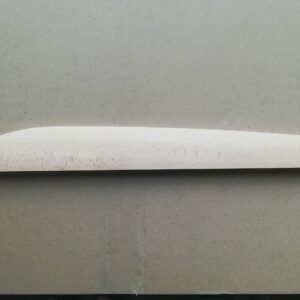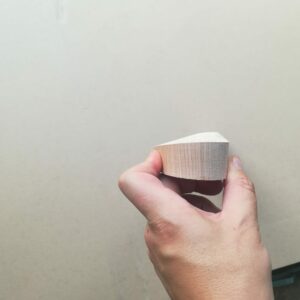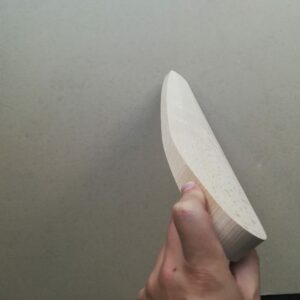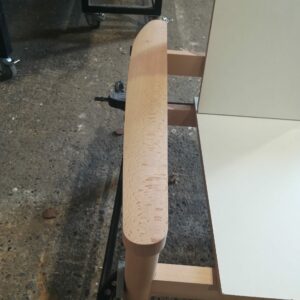Rounding over a curved and sloped armrest
Hi everyone,
I could use some advise!
I am currently working on an armchair. I just finished milling and shaping the armrest. The armrest is designed with a curved and sloped surface. The armrest has an arc going from its top height of 28 mm towards 12 mm.
I am going to make a round over on the edges of the armrest, using a roundover bit with a guidance bearing. But, without a true flat surface on the topside of the armrest, it seems to be a bit uneasy to keep a router straight without wiggling it around. I am thinking about routing it on a router table, flip it around, shimming the sloped part and routing it that way. But before I make the cut, and possibly ruining my armrest, I was wondering what you guys think.
What is the best way to round over an uneven part like this with a router?
Max




















Replies
I don't thing a router will do what you want here. For a round-over bit to give a full round over, the two surfaces need to meet at 90º. Your's meet at greater than 90º, so the bit won't fit into the corner and give a full round-over. I would practice on scrap and do it by hand with a spokeshave or block plane, finishing up with a sharp card scraper. You can also vary purposely the amount of round-over to give the arm more interest and a less muddy look.
Definitely, spokeshave maybe- cardscraper definitely. Take a pencil mark your high center make another mark halfway of your radius or arc on each side and start there. Make a template to keep you on track but you can do this mostly by eye.
How much of a roundover?
4.5 mm radius. I believe it's ¹¹/₆₄.
(Metric user here, so correct me if I am wrong.)
Spokeshave or rasp, card scraper, sandpaper.
Agree with those others suggesting a router is not appropriate for such a task. You might get some sort of roundover made but you risk tilts and gouges without good reference surfaces for the router base and the bit guide-bearing.
Personally I'd use a BB lead pencil to shade and reshade (as I go) areas to reduce and round, gradually taking off the excess with not just a spokeshave, block plane or scraper but primarily with rasps. Rasps can shape very accurately in all dimensions, once you get your eye and hand used to doing so.
Good rasps are expensive, mind; and you might need more than one. Also, its best to practice on a similarly shaped scrap piece before having-at the nice furniture part.
Once you've rasped the basic shape, you can smooth and refine with cleaner-cutting tools like the spokeshave and card scraper; also sandpaper.
Lataxe
As Lataxe said, a good rasp will quickly do the job. The French models, Auriou and Liogier are very good tools but pricey. I have the Dragon rasps from Stew-Mac and they work very well, about half price. I use both the coarse and fine tools all the time. A good rasp will remove a lot of material in short order and allow you to get to the final shape you want. Finish with scraper and sandpaper. I do not like the Nicholson 49 and 50. If possible look at the video of Dan Faia marking and shaping the backrest of a chair. And let me add that you are shaping wood. What looks good and feels good is good. No one would ever notice, "Whoa, this one is +0.002 bigger than that one! "
Hello everyone. Thank you all for your imput. I've decided to rout all the parts that where easy to keep in an 90 degrees angle. The rest I will indeed shape with raspes and spokeshaves. I will keep you guys posted with the end result.